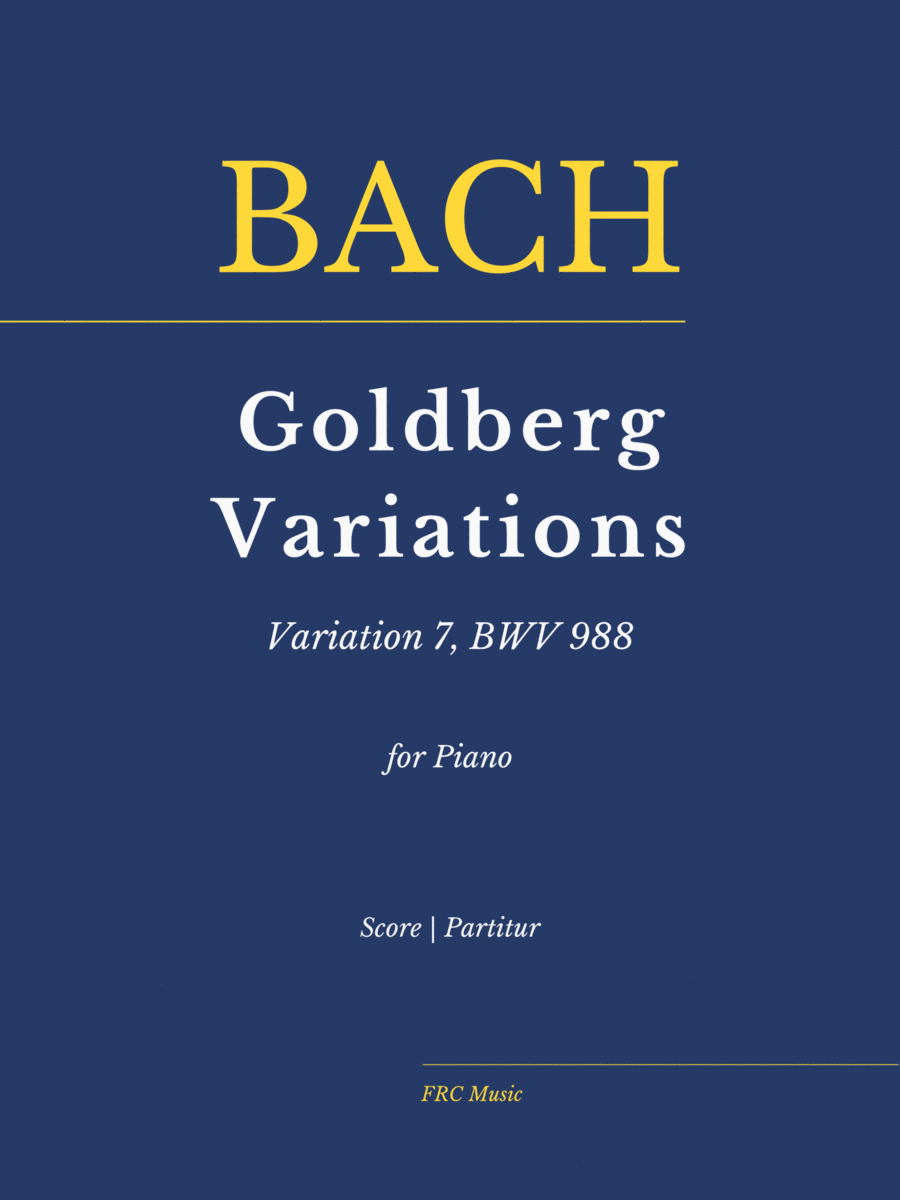Piano Solo - Level 3 - Digital Download SKU: A0.1370017 By Johann Sebastian Bach and VÃkingur Ãlafsson. By Johann Sebastian Bach. Arranged by Flavio Regis Cunha. Baroque,Classical,Contest,Festival,Instructional,Wedding. Score. 4 pages. Flavio Regis Cunha #954392. Published by Flavio Regis Cunha (A0.1370017). Bach: Goldberg Variations, BWV 988: Var. 7 (as played by VÃkingur Ãlafsson) Intermediate. Format: Concert, 9 x 12 inches. 4 pages. PLUS: Engraved and Published with Urtext Kapellmeister Music Fonts.____________________________________________Renowned for his innovative interpretations of J.S. Bach, VÃkingur Ãlafsson, an eminent pianist and contemporary musical visionary, now undertakes the monumental task of presenting Bachâs Goldberg Variations. The upcoming season is exclusively dedicated to a global tour spanning six continents, with the eagerly anticipated album set for release in October 2023 on Deutsche Grammophon. Ãlafsson expresses, I've nurtured the dream of recording this piece for 25 years.Following the triumphant 2018 DG recording of Johann Sebastian Bach's works, which earned him BBC Music magazineâs Album of the Year, Opus Klassikâs Solo Recital award, and numerous other recording of the year honors, Ãlafsson solidified his status as Gramophone magazineâs Artist of the Year. Now, Ãlafsson channels his unique musical insight and meticulous recording expertise into Bachâs masterpiece, marking his initial foray into recording a complete work, starting with one of the most demanding pieces in the piano repertoire.In the 2023-24 season, Ãlafsson embarks on a Goldberg Variations world tour, gracing prestigious concert halls worldwide, including Londonâs Southbank Centre, New Yorkâs Carnegie Hall, Wiener Konzerthaus, Philharmonie de Paris, Tokyoâs Suntory Hall, Philharmonie Berlin, Harpa Concert Hall, Sydney Opera House, LAâs Walt Disney Hall, Sala São Paulo, Shanghai Symphony Hall, Tonhalle Zurich, KKL Luzern, Alte Oper Frankfurt, Mupa Budapest, and Teatro Colón, among others.Reflecting on the profound impact of the Goldberg Variations, Ãlafsson remarks, âThe Goldberg Variations encompass some of the most virtuosic keyboard music ever penned, employing brilliant counterpoint and evoking exalted poetry, abstract contemplation, and deep pathos â all within impeccably crafted structures of formal perfection. In 30 variations, based on the humble harmonic framework of a simple, graceful aria, Bach transforms limited material into boundless variety like no one before or since. He stands as the greatest keyboard virtuoso of his time.â.
